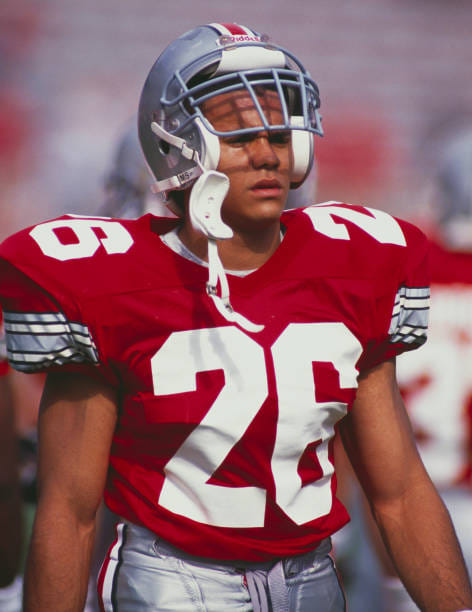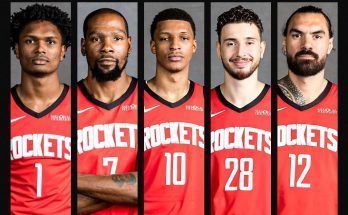October 10, 1992: A crisp autumn day at The Horseshoe in Columbus. Ohio Stadium was nearly full, with 93,982 passionate Buckeye fans draped in scarlet and gray. Anticipation and tension hummed through the air as the No. 21 Ohio State Buckeyes prepared to face the Illinois Fighting Illini. It was the first time Ohio State met Illinois since the Huskers’ last victory in 1987, yet despite home-field advantage, this game carried a more sinister weight—Ohio State had now lost to Illinois four consecutive times ([Eleven Warriors]
Ohio State’s offense, under John Cooper’s direction, opened with optimism. A strong kickoff return by Butler By’note set up a first-and-goal inside the 1‑yard-line. But freshman sensation Eddie George stumbled and fumbled as he crashed into the line. Illinois’ Jeff Arneson scooped it up and electrified the stadium with a 96‑yard fumble return touchdown—an instantaneous 7–0 deficit for the home side
Inside that moment, Robert Smith, wearing #26, stepped into the limelight. Known for his dynamic blend of size (6′2″, 210 lb) and speed—he’d once run a 10.24 s 100 m dash—Smith had returned to football in 1992 after a one-year hiatus to concentrate on track ([Wikipedia] Now, with the offense stalling and pressure mounting, he received the call.
Smith carried the ball on several of OSU’s subsequent drives. His shiftiness in traffic and power running quickly made it clear: he wasn’t here to merely fill the backfield, but to lead. Ohio State scored first when Tim Williams capped a drive with a field goal. Illinois responded with another score, making it 13–3 at one point. Smith remained a constant threat, though the score didn’t always reflect his efforts.
Midway through the second quarter, Illinois pinched OSU deep. A rocking safety, forced by defender Ken Blackman, underscored how perilous the Buckeyes’ situation was. But then momentum shifted. Bowman’s pick‑six? No—but corner Tim Walton’s interception and 59‑yard gallop to the Illinois 5 took life out of the visitors. That set the stage for Williams’ clutch 25‑yard field goal before halftime, slicing the deficit to 15–13
Smith’s contributions, though, were not reflected on the board. He kept pounding: runs north–south, weaving past unblocked linebackers, and battling would-be tacklers at the line. On the next drive, Williams knocked through a 31-yard field goal to put Ohio State up 16–15. The momentum had swung heavily toward the home side.
Entering the fourth quarter, the intensity ratcheted up. Smith, alongside freshman Eddie George and senior Raymont Harris, labored to maintain drives. Every third-down situation became a turning point, where a first-down meant lifeline, and a stop meant defeat. George fumbled again, but the defense held.
Illinois capitalized on that turnover, mounting a decisive drive that ended with kicker Chris Richardson splitting the uprights from 21 yards out, pushing Illinois ahead 18–16 ([The Buckeye Football Blog](https://thebuckeyefootballblog.com/2021/01/16/the-1992-ohio-state-buckeyes/?utm_source=chatgpt.com),
Ohio State’s twilight drive had urgency: 53 seconds, inside Illinois territory. With heavy pressure, Williams’ 44-yard field goal attempt rimmed out. Time expired. Illinois stunned the Horseshoe, winning 18–16, extending their dominance to five straight over the Buckeyes—a streak dating back to 1988 ().
Yet amid the disappointment, Robert Smith stood out. Over the course of the afternoon, he handled a heavy load—he rushed for 819 yards on the season across all games, totaling over 10 touchdowns that year ([The Buckeye Football Blog] Though exact game-day stats for Illinois are not comprehensive, narrative accounts uniformly recognize how he consistently gained tough yards, wore down defenders, and offered hope to fans when the offense sputtered.
Smith’s 1992 season marked a turning point—not just for him, but for OSU’s offense. He became a powerful downhill runner with strong vision and surprising elusiveness. His back-to-back 100+ yard games later in the season confirmed his emergence as the Buckeyes’ offensive centerpiece (). Notably, he exploded for massive performances against Iowa, rushing 129 yards with two TDs, and topped that with a career-high 175 yards and two touchdowns versus Indiana ().
Despite the sting of the Illinois loss, OSU closed the season strong—winning five straight, tying Michigan 13–13, and earning a Citrus Bowl bid (). Smith finished with 819 rushing yards and 10 touchdowns in just two seasons, reinforcing his status as a powerful threat ().
Smith’s collegiate success captured NFL scouts’ attention. In the 1993 draft, he was selected in the first round, 21st overall, by the Minnesota Vikings. He wore #26 in college and went on to don the same number professionally. His versatility at OSU—combining breakaway speed, vision, and physicality—translated to an eight-year NFL career that encompassed 6,818 rushing yards, 4.8 yards per carry, and 32 touchdowns, earning two Pro Bowls in 1998 and 2000 ([Wikipedia]
Looking back at that October afternoon, Robert Smith’s performance against Illinois demonstrated his growing ability to carry an offense under pressure. He stood tall against a defense that disrupted Ohio State repeatedly, offering a combination of grit and athleticism that would define his career.
Beyond his college years, Smith built a lasting legacy. He remains one of the Vikings’ all-time leading rushers and an influential football analyst. From Euclid High School star to Buckeye leader and NFL standout, Smith’s story exemplifies dedication, talent, and perseverance ().
The 1992 showdown at The Horseshoe remains a pivotal flashpoint—a game of missed chances and narrow margins, but also a stage where Robert Smith emerged as a force. His ascent provided a glimpse into what would become an accomplished career, a career rooted in that early October afternoon under the Ohio sun, wearing scarlet and gray, where even in defeat, greatness was born.
In the end, the 18–16 result stung. But for those paying close attention, the dominant spirit of #26 had already taken shape—resilient, powerful, and quietly unstoppable. That flashback to glory lives on not only in memory but in the arc of Smith’s rise from Buckeye standout to NFL star and cultural icon.



